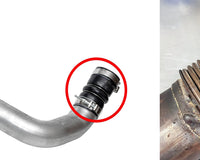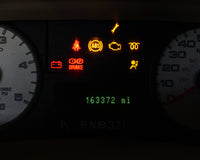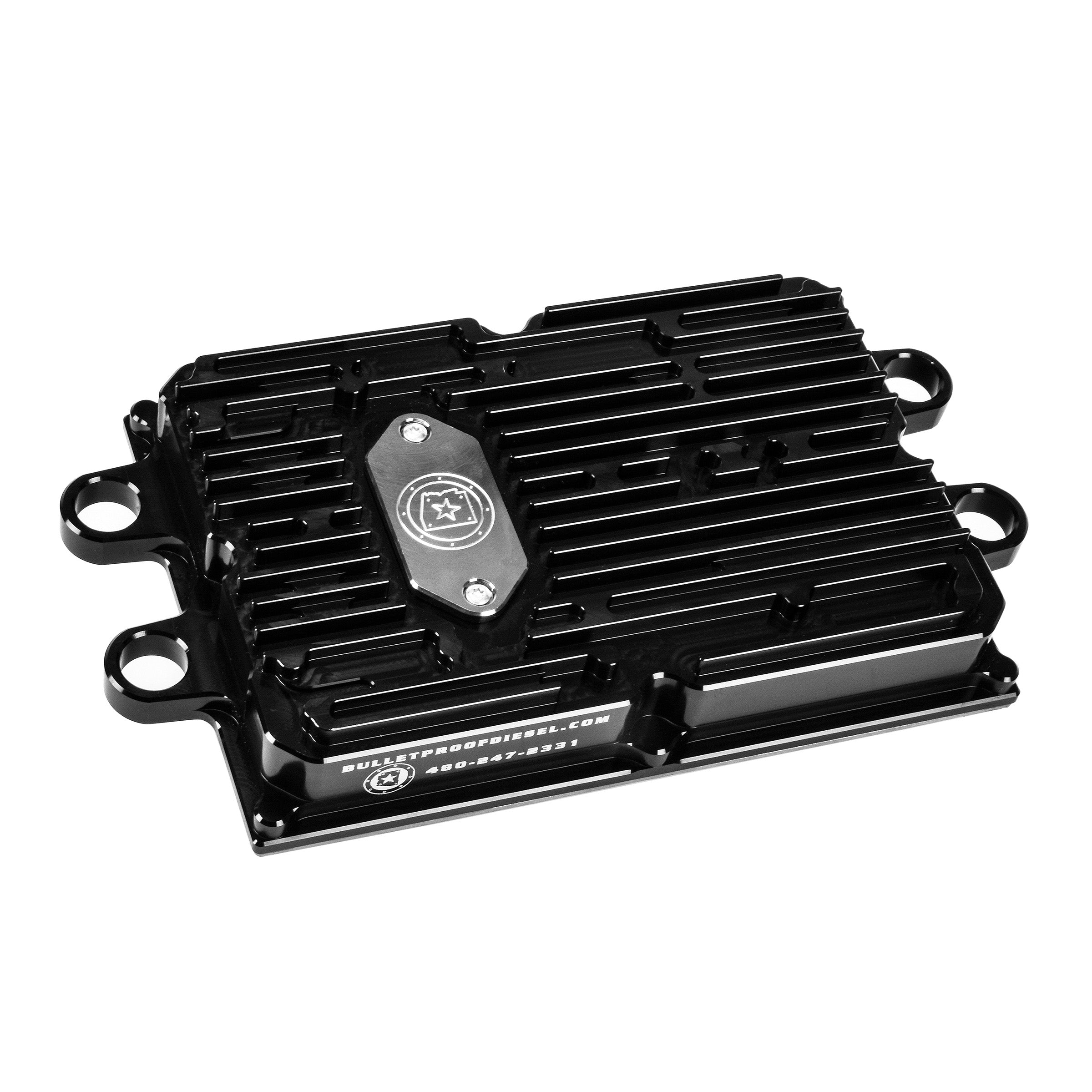What are the symptoms of a failing 6.0 FICM?
A failing FICM can cause all sorts of problems, but one of the most common symptoms is an engine that is hard to get started, especially when the engine is cold or has sat overnight. This can mean that the engine cranks over for longer than normal before firing off and/or the engine starts, but then dies and after many attempts, finally starts, but runs rough for a while. These symptoms are going to be most likely related to a power supply side failure, where the power to the injectors is inadequate or less than 48 volts. As it relates to the FICM, there are a few other symptoms to mention. One would be a complete no start situation where the engine cranks over, but will not run. This may be related to either a completely failed power supply side of the FICM (20 volts or less output), or in some rare cases a failed logic side. Another symptom commonly seen is the engine is running rough or misfiring all of the time, or after the engine is warmed up. This symptom can normally be traced back to a failed injector, but in some cases has proven to be a FICM logic side failure as well. The fuel injection system is quite complicated, so for an effective and definitive diagnosis it may require specialized training and/or tools.
What is a FICM and what does it do?
A 6.0 FICM or fuel injection control module is what provides power and control to the fuel injectors. The FICM is mounted on supporting brackets above the valve cover on the driver’s side of the engine and was used on the 6.0 Power Stroke engines. There are three large electrical connections on the bottom side of the FICM, one for the engine control module (ECM) communication and the other two are connections to the eight fuel injectors. To better visualize the FICM, you need to know that it has two ‘halves’, one half is referred to as the logic side/half and the other is the power supply side/half. As you probably guessed, the logic side is what controls fuel injection timing and duration, the power side is what supplies power - 48 volts - to the two small coils on the injectors. Simply put, the engine will not run without the FICM, which makes this a top priority when reliability and longevity are being discussed.
Basic FICM Testing
There are many ways to test the FICM and some of them require specialized diagnostic equipment. However some tests are fairly simple using hand tools and a multimeter. If you find that your symptoms align with the hard starts and rough running cold, then the testing may be as simple as grabbing your multimeter and a friend to help. There is a small assembly cover on the top of the FICM, that is normally held down by two torx T20 screws. If you remove this cover, you should see four smaller torx T15 screws. If you connect the negative lead of your multimeter to the battery negative and touch the positive lead to the screw closest to the driver’s side of the truck, then have your friend turn the key to the “on” position, the multimeter should read 48 volts or so (note: be VERY careful NOT to allow your leads to ground out to the case during testing) If this reading doesn’t display or you receive an error warning from the multimeter, you may need to change the voltage setting on the meter to allow it to display the 48 volt reading. If you see the 48 volts, then have your friend crank the engine over and pay close attention to the meter. During cranking anything less than 46 volts would be considered a failing FICM power supply side. There are other factors that can lead to inadequate voltage output, such as bad connections and/or vehicle battery issues, so if you suspect that the vehicle battery(s) could be bad, have them charged and load tested before trying this test.
Trouble Codes Set | Failing FICM
A FICM can fail in several ways.In some cases there will be trouble codes stored in the computer that will help with the diagnosis. Remember, we mentioned there are two “halves” to the FICM, so the trouble codes stored may help us to identify which half of the FICM is causing which symptoms. The most common trouble codes for a failing FICM power supply, are P0611 (FICM performance) accompanied with all eight Injector Circuit Low codes (P0261, P0264, P0267, P0270, P0273, P0276, P0279, P0282). The ECM is continually monitoring FICM performance and voltage output during normal engine operation. If the output voltage is less than a specific threshold, somewhere around 40 volts, the injector circuit low and FICM performance codes may set. If you are able to retrieve these trouble codes and prove the low voltage with the manual voltage test as described above, then it should be a safe bet to replace the power supply half of the FICM. There are several other trouble codes that may be stored as a result of a failing FICM and may be better related to a failing logic half. It is possible for a component(s) failure on the logic half, related to a specific cylinder or a group of injectors. This type of failure normally results in a poor running engine, or an engine misfire at all times. The typical trouble codes in this case would be Injector Circuit High (P0262, P0265, P0268, P0271, P0274, P0277, P0280, P0283). There are several tests such as an Injector Buzz Test and Cylinder Contribution Test that can be performed to help confirm this failure. These types of tests would need to be performed with a specialized scan tool such as the Ford IDS or equivalent.
6.0 Power Stroke FICM Replacement
As mentioned earlier, there are two halves to the FICM and once you know which half has failed, you can make a better decision on which replacement option is best for you. If you find that just the power half has failed, such that you are getting less than 48 volt output and the symptoms align with power supply failure, then it may be best and most cost effective to simply replace the power supply half. There are several aftermarket options on the market today, but most are similar to the original factory part with the same types of failure potential. One option that is better than original is by Bullet Proof Diesel and they offer a completely new, fully upgraded version that utilizes military grade components and a all billet aluminum housing to help dissipate the component heat more effectively. Bullet Proof Diesel also offers a version that is capable of outputting higher than the factory 48 volts. High output FICM units have been around for many years and the Bullet Proof Diesel version was designed specifically with the higher voltage output in mind. This means that you can confidently run the higher voltage, without the worry of negative side effects to reliability or longevity to the FICM, injectors, or injector wiring.
Another option for replacement would be to simply replace the entire FICM, rather than just the power supply half. This would be most applicable in a case where there was uncertainty in the diagnosis or where the failure was identified as being a logic half problem. The point being, you cannot purchase just the logic half of the FICM, so if the logic board has failed, then you will need to replace the entire FICM. Again, there are many options out in the marketplace for this type of replacement, most will require some sort of programming after the installation. This can be problematic, because most “do it yourselfers” do not have access to the necessary tools for this type of programming. The good news is that Bullet Proof Diesel offers a complete FICM unit, ready to install and there is no programming necessary. This means that you can purchase the complete FICM, install it and be ready to drive.
The 6.0L FICM is actually a highly complicated control module with a high rate of failure. However, it is commonly misunderstood and replaced as a result of misdiagnosis. A replacement FICM can cost upwards of $1000 to replace, so guessing with that much money is probably not a good idea. If the voltage test does not indicate a problem, but the FICM is suspected to be the cause, be sure to seek a professional diagnosis before replacement. Another approach that has certainly paid off for 6.0L owners is a preventive or proactive upgrade of the FICM unit. This proactive upgrade/replacement helps for many reasons, including replacement on your time/schedule, planned/budget friendly, and no tow bills just to get you back home. Remember - the most expensive repairs occur when you need your truck the most.












